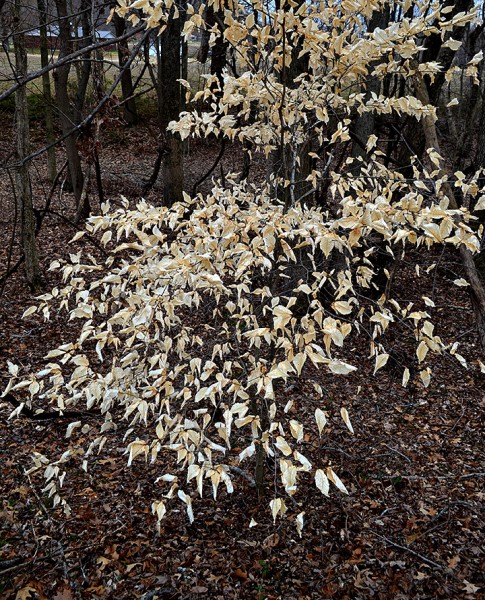 I stumbled across an interesting leaf thing, then I stumbled across what might or might not explain it. I don’t dabble in plants. I have a very simplistic view of nature. I divide animals into two camps: ones that I can eat and ones that can eat me.
I stumbled across an interesting leaf thing, then I stumbled across what might or might not explain it. I don’t dabble in plants. I have a very simplistic view of nature. I divide animals into two camps: ones that I can eat and ones that can eat me.
Even though Wife Lila has a fascinating gardening blog (worth checking out, I have to say), I divide the plant world into two camps, too: weeds and not weeds. How do you tell the difference? You chop ’em all down. The ones that grow back are weeds.
Leaves were stark white
Having said that, I stopped to take a picture of this bush / tree / weed along the St. Louis & Iron Mountain Railroad tracks south of the Allenville Diversion Channel bridge. It was the only thing around that held onto its leaves and they were a stark white.
It just so happens that I saw a story that explained what might be going on here. It’s a long piece, so I’m going to send you directly to the Northern Woodlands site for the whole drink of water. Bottom line is that different trees shed their leaves differently.
First trees were evergreens
The first trees on the planet were evergreens, Northern Woodlands points out. They appear to be green all the time, but entire age classes of needles die, turn brown and drop off every year. “On the other end of the spectrum are deciduous trees [like the birch, maple, cherry and aspen], which seem to drop their leaves all at once after a pigment party every fall.” I like that phrase. I’m probably going to steal it one of these days.
The story continues, “But then we have a third class of tree in beech and oak that seems to represent a middle ground of sorts between evergreen and deciduous. Their leaves die, but many don’t fall when they die. Botanists call this retention of dead plant matter marcescence.”
It goes on to explain why there might be an ecological advantage to being the last guy on the block to go naked, but I started tuning out. If anybody knows what the white-leaved thing is, let me know.
